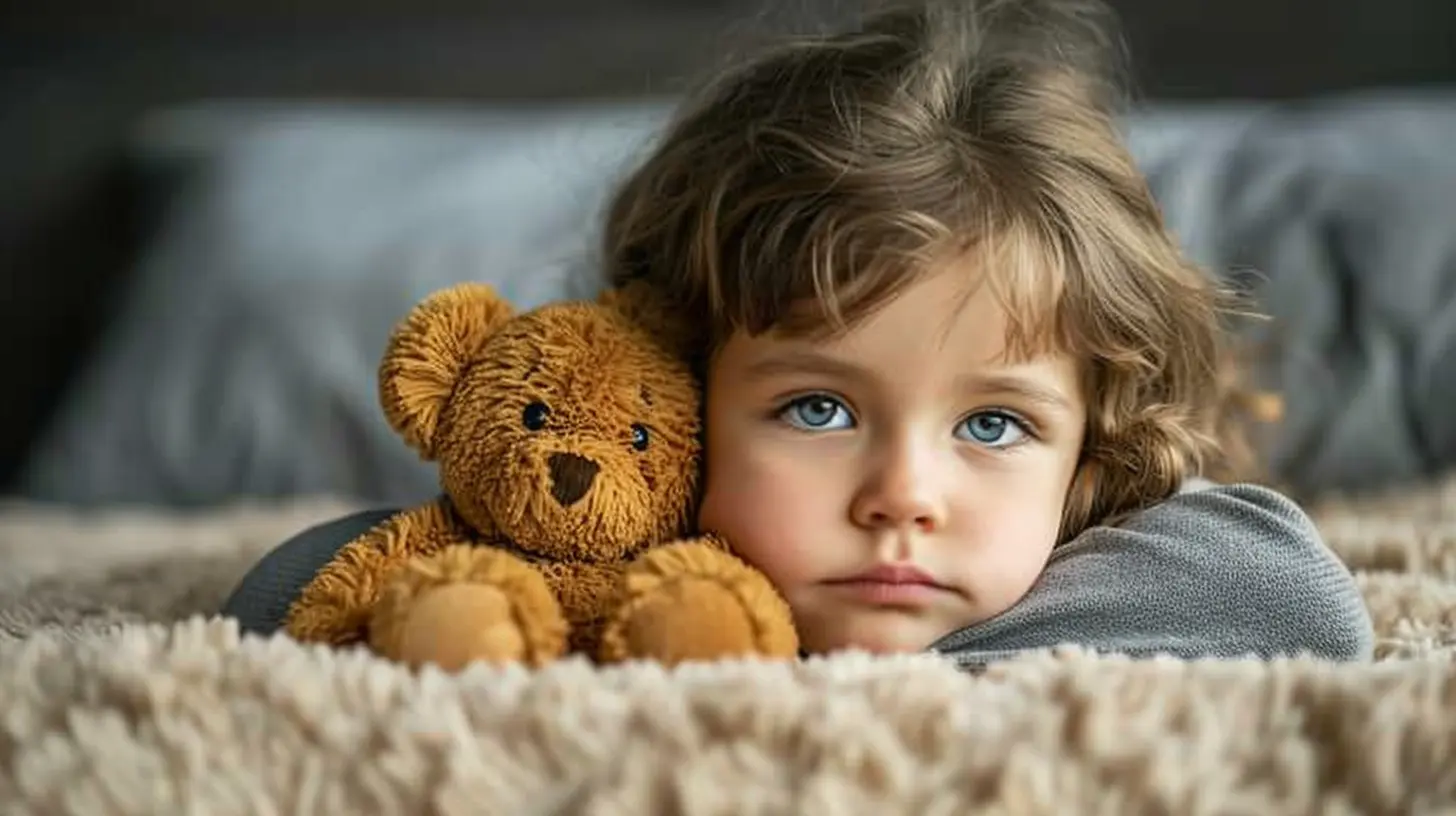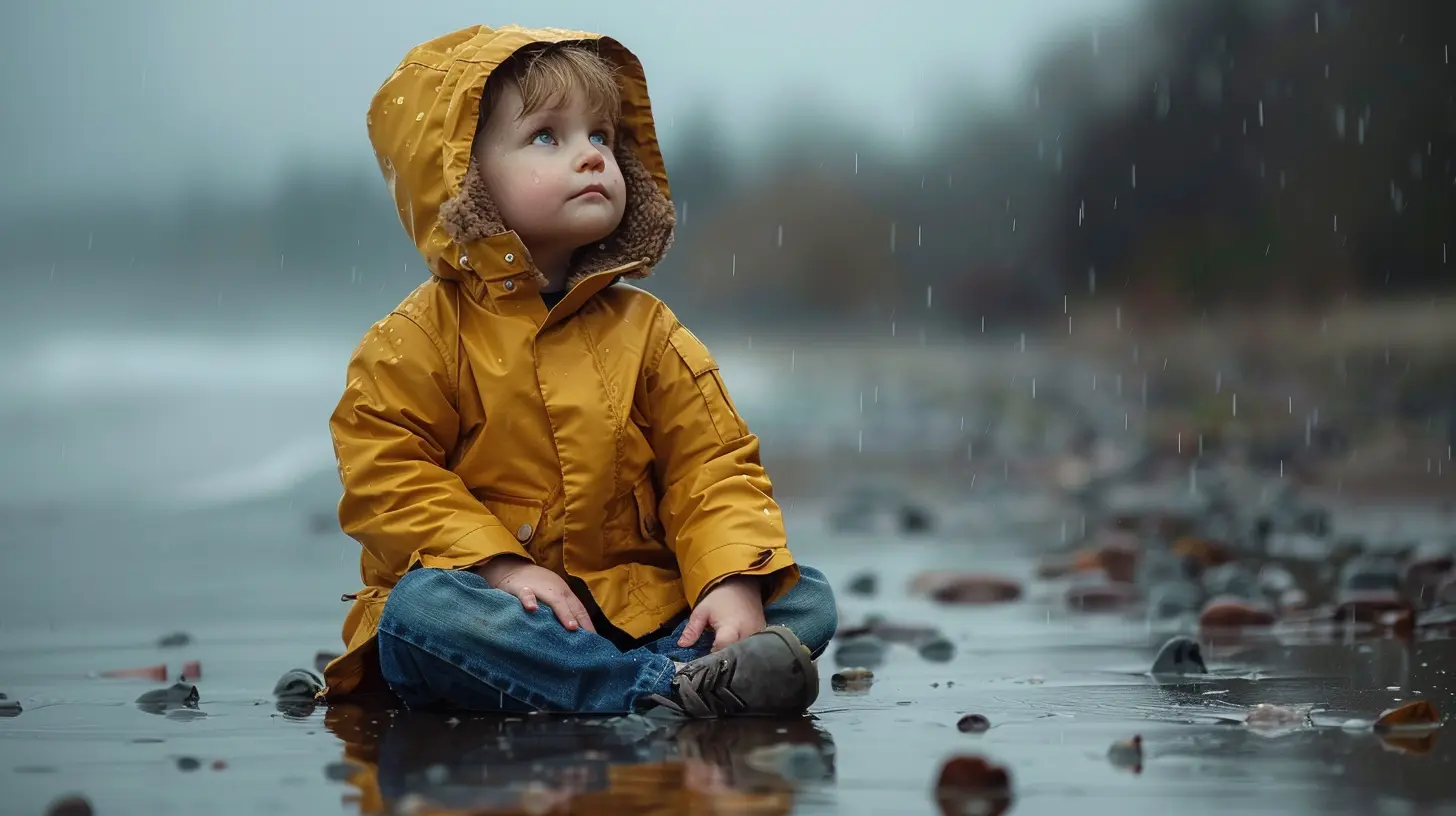Fostering Emotional Resilience in Toddlers
11 November 2025
Let’s be real—parenting a toddler can feel like weathering a tiny, emotional hurricane. One moment they're giggling uncontrollably, and the next, they're melting down over the shape of their sandwich. Sound familiar? If you’ve found yourself wondering how to help your little one handle these big, messy feelings, you’re not alone. That’s where fostering emotional resilience comes in.

What Exactly Is Emotional Resilience?
Simply put, emotional resilience is the ability to bounce back from stress, conflict, failure, or disappointment. It's that inner strength that helps your child face challenges and keep going, even when things get tough. Think of it like an emotional muscle—they’re not born with it fully formed; it needs to be built, nurtured, and strengthened, just like learning to walk or talk.
Why Emotional Resilience Matters—Even This Young
You might be asking, “Toddlers are still learning to speak in full sentences—can they really be resilient?” Absolutely! In fact, early childhood is the perfect time to start laying the groundwork. Resilient toddlers are better equipped to handle separation anxiety, try new things, manage emotions, and navigate those inevitable toddler setbacks (like the wrong color cup again).Building emotional resilience now sets the stage for future emotional well-being, healthier relationships, and better problem-solving skills. It’s one of those "teach them to fish" moments—but instead of catching dinner, you're helping them manage their feelings and face life with confidence.

The Science Behind It: How Toddlers Learn to Cope
Toddlers’ brains are developing at lightning speed. Between ages 1 and 3, neural connections form rapidly, especially in areas tied to emotion and behavior. But here’s the thing: they’re still operating mostly on pure emotion. Logic? Not quite there yet. That’s why emotional outbursts are so common in toddlerhood.They’re not being difficult on purpose—they literally don’t have the tools yet. What they do have, though, is a powerful learning system: modeling. Toddlers are emotional sponges, soaking up how you manage your own stress, frustration, and sadness.

How to Start Fostering Emotional Resilience in Toddlers
Alright, let’s dive into the how. The good news? You don’t need a PhD in psychology. You already have what it takes—just a little patience, some awareness, and a whole lot of love.1. Label and Validate Their Emotions
When your toddler starts screaming because they dropped a toy, it might be tempting to say, “You’re fine” or “Stop crying.” But that teaches them to ignore or suppress those feelings. Instead, try this:> “I can see you’re really upset that your toy fell. That must be frustrating.”
By putting words to their feelings, you help them make sense of what's going on inside. It’s like giving them an emotional dictionary. And when they feel seen and heard, they learn that emotions aren’t scary or bad—they’re just part of being human.
2. Let Them Feel—Don’t Rush to Fix
We all want to rescue our kids from discomfort. It’s natural. But when we swoop in too quickly to stop the crying or fix the frustration, we’re actually robbing them of a chance to cope.What if we let them sit with those feelings a moment longer?
> “It’s okay to be sad. I’m right here with you.”
You’re not leaving them alone with their feelings—you’re guiding them through it. That’s where resilience starts to grow: not in avoiding emotions, but in facing them with support.
3. Model Calm Problem-Solving
We can’t expect toddlers to handle stress calmly if we're constantly losing our own cool. Yep, this one’s a tough pill to swallow. But remember: your child is watching you like a hawk. Every sigh, every snapped response, every deep breath—you’re teaching them how to respond to stress.So next time the milk spills all over the floor? Pause. Breathe. And say:
> “Oops, that was an accident. Let’s clean it up together.”
You’re showing them two things: mistakes aren’t the end of the world, and even when things go wrong, we can handle it.
4. Encourage Independence (Even When It’s Messy)
Let’s be honest—watching a toddler “help” with getting dressed or pouring cereal can be...painful. But giving them opportunities to try, fail, and try again is huge for building confidence and resilience.When something goes wrong, resist the urge to step in right away. Instead, say:
> “That’s tricky, huh? What do you think we should try next?”
You're letting them really engage with the problem and showing faith in their ability to figure it out. That belief alone is a resilience booster.
5. Establish Predictable Routines
Toddlers thrive on routine. A predictable day gives them a sense of security—and that foundation allows them to better handle unexpected stress.Knowing snack time, nap time, and story time are constants makes the chaos of life a little more manageable. It’s like giving their emotional world some scaffolding to lean on.
If a big change is coming (like moving or a new sibling), prep them in advance with books, stories, and simple explanations. The more they know what to expect, the less overwhelmed they’ll feel.
6. Say “No” With Love and Consistency
Boundaries aren’t just rules—they’re signals of safety. When you consistently follow through, even when they push back (and oh, will they push), you’re saying:> “I’ve got you. I’m in charge. You’re safe.”
The predictability of consequences helps toddlers feel secure enough to explore and try, which feeds right into emotional resilience. Chaos and inconsistency? Not so much.
Consistency is hard, especially when you’re sleep-deprived and negotiating with a toddler terrorist who wants to wear pajamas to the grocery store. But holding your ground—kindly—is a gift.
7. Talk About Your Own Emotions
Children learn emotional coping not just through their own experiences but by watching you. When you're having a rough day, narrate it in child-friendly terms:> “I feel a little overwhelmed today, so I'm going to take a deep breath.”
You’re normalizing emotions and showing healthy ways to deal with them. That’s gold. It also gives your toddler permission to share how they feel without fear.
8. Teach Basic Coping Tools
You don’t need to break out meditation cushions. Toddler-friendly coping skills can be as simple as:- Taking a deep breath together
- Hugging a stuffed animal
- Scribbling with crayons
- Listening to calming music
- Counting to five
Make these fun, consistent, and part of their routine—not something they only use in meltdown mode.
9. Praise Effort and Emotions, Not Just Outcomes
Instead of saying, “You’re so smart,” try, “You worked really hard on that!” Or when they calm down after being upset:> “You stopped and took a breath. That was awesome!”
Praising the process helps kids feel good about trying, not just succeeding. That’s the heart of resilience: keep showing up, even when it’s hard.
10. Accept That Meltdowns Are Learning Moments
You can’t—and shouldn't—stop every tantrum. Emotional outbursts are how toddlers process their feelings. Instead of viewing meltdowns as failures, see them as golden opportunities.Stay close, offer calm, and when the storm passes, talk it through.
> “You were so upset when we had to leave the park. That’s okay—you really wanted to stay. Next time, what could we do when we feel really mad?”
No, they won't give you a TED Talk on emotional regulation—but over time, these conversations lay the bricks for understanding and managing emotions.
Final Thoughts: Progress Over Perfection
Look, nobody gets this right all the time. We all lose our patience, raise our voice, or say the wrong thing. But fostering emotional resilience isn’t about being a perfect parent—it’s about showing up, tuning in, and doing your best to help your child feel seen, safe, and capable.Some days, it’ll feel like nothing’s working. Other days, they'll surprise you. One deep breath at a time, you're helping your toddler learn how to navigate this big, wild world—and that’s the real win.
So the next time your little one has a meltdown over broccoli or a broken block tower, remember: this is their emotional workout. And you? You're their coach, cheerleader, and safe space all rolled into one.
You’ve got this. And they do too.
all images in this post were generated using AI tools
Category:
Emotional IntelligenceAuthor:

Zelda Gill
Discussion
rate this article
1 comments
Paula Gates
This article highlights the critical role of emotional resilience in early childhood development. By encouraging toddlers to express their feelings and providing supportive environments, caregivers can foster skills that promote adaptability and coping strategies. Cultivating resilience now not only enhances emotional intelligence but also prepares children for life's inevitable challenges later on.
November 12, 2025 at 3:50 AM

Zelda Gill
Thank you for your insightful comment! I completely agree—supporting emotional expression in toddlers is essential for building resilience and equipping them for future challenges.


